Southern Africa - South Africa, Botswana, Zimbabwe, Zambia, Namibia
August 23 - September 15, 2016
Part One - Okavango Delta, Botswana
Page One
I went on an Overseas Adventure Travel trip to Southern Africa that
included a pre-trip extension to the Okavango Delta in Botswana. Each
year nearly 3 trillion gallons of water pour into the delta, and none of it
flows out into rivers. With less than 6 feet of height variation across its
thousands of square miles, the delta holds water like a vast pool in season.
The huge volume is evaporated or absorbed by the earth. There are times when
parts of the delta become arid plains, where moisture is scarce, since it is
nestled in the Kalahari Desert, and its seasons fluctuate from heavy
rain in the African summer that causes flooding, to the hot spring seasons
that parch the land. I was there in dry season.

My tent at Kanakara Tented Camp in Okavango Delta
The first night there I was the only one in the camp because
the only other person on the pre-trip arrived a day late. The
second night, it was just the two of us, then others from various
other countries arrived on a different tour.

Inside the tent. Behind the canvass wall in the back
is a flush toilet and a basin. Behind another canvass
wall in back of that is the shower.
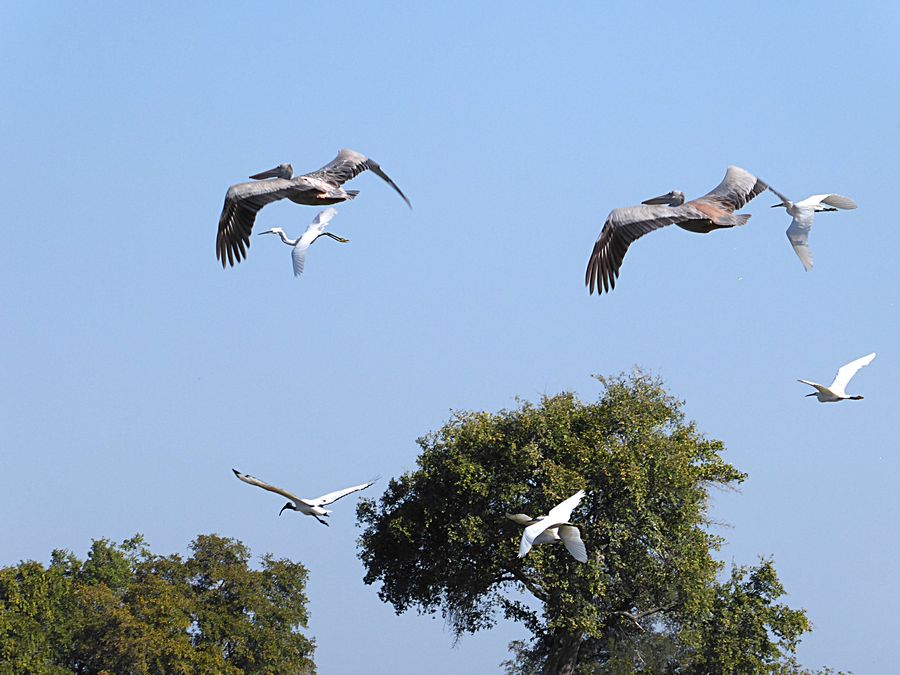
Pink-backed pelicans flying over the Delta. Sacred Ibis
lower left. Egrets around the pelicans.
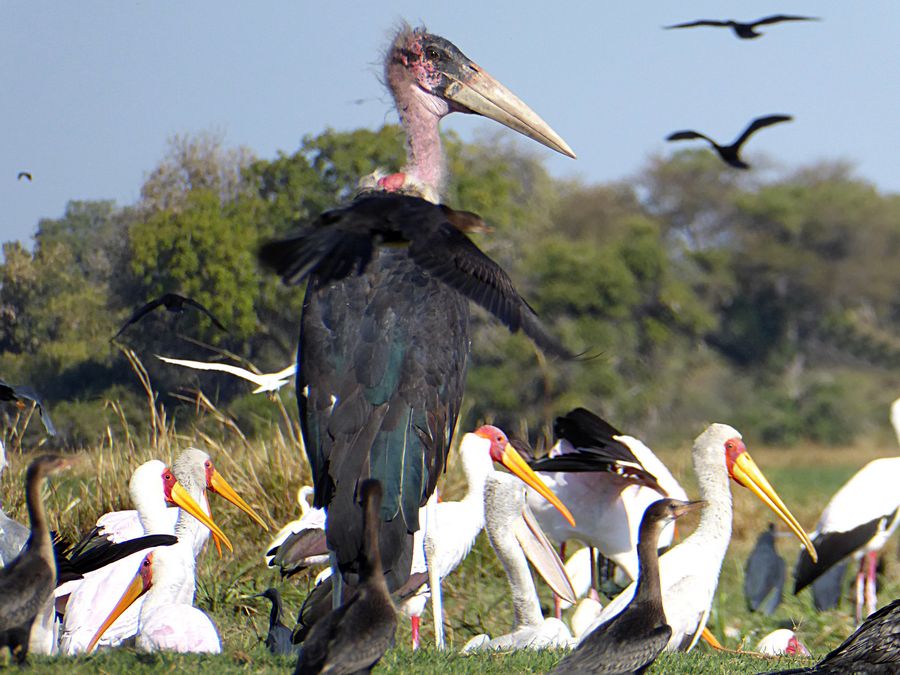
Marabou stork with yellow-billed storks. A massive number
of birds were gathered in a main channel a ways from the
tented camp. Marabou storks feed on carrion and are attracted
in large numbers to fish stranded in shrinking waters. Flies with
neck tucked in.
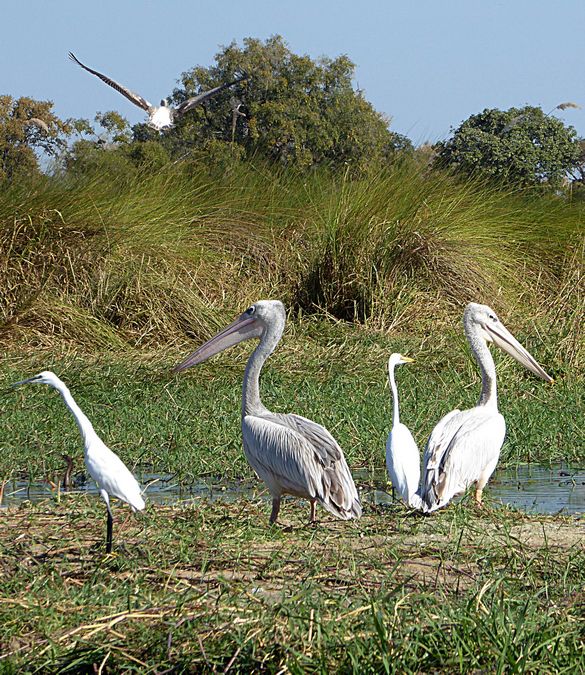
More pink-backed pelicans with egrets.
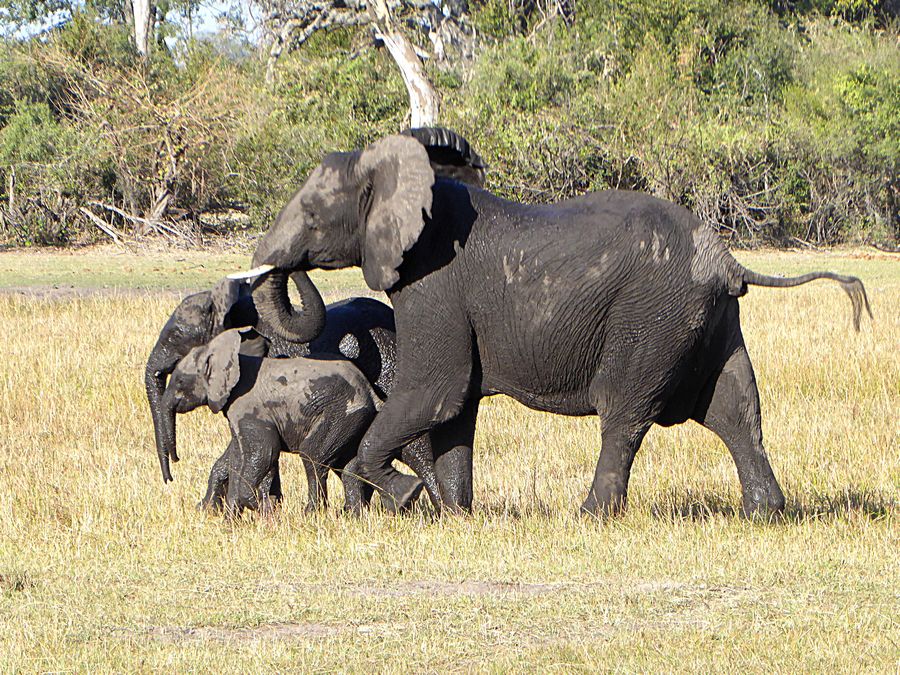
Female elephant protecting 2 young ones.
Males are larger than females with a rounded rather
than angular forehead. Dominant females lead family
units that may combine to form herds. Males usually
keep to themselves in smaller bachelor groups. They
feed on leaves, bark and grass for over 14 hours each day.
They change woodlands as a result.
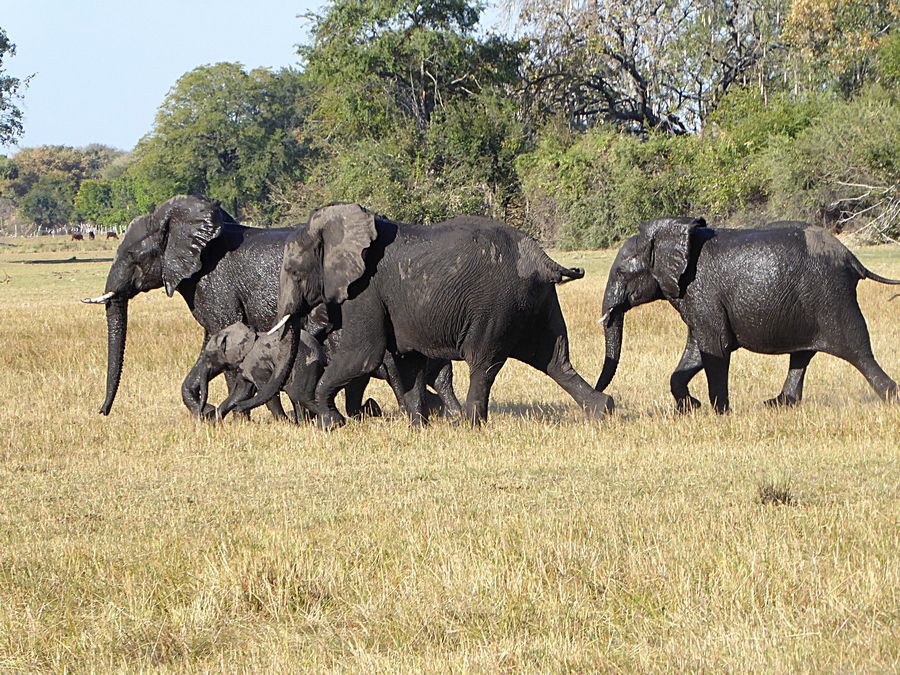
While feeding, elephants use their trunks to pluck at leaves
and their tusks to tear at branches. This can cause much
damage to foliage. A herd may deplete an area of foliage
depriving other herbivores for a while. A herd of elephants
is also called a parade of elephants.

Painted reed frog, a small brightly colored frog. Adults
are variable in color, with white bodies streaked, spotted,
or blotched in red and black. They abound in reedbeds
and flooded grassland. In the Delta we viewed wildlife
both from open-aired safari vehicles and from small,
canoe-like boats called mokoros. I saw this frog from
a mokoro with a guide.
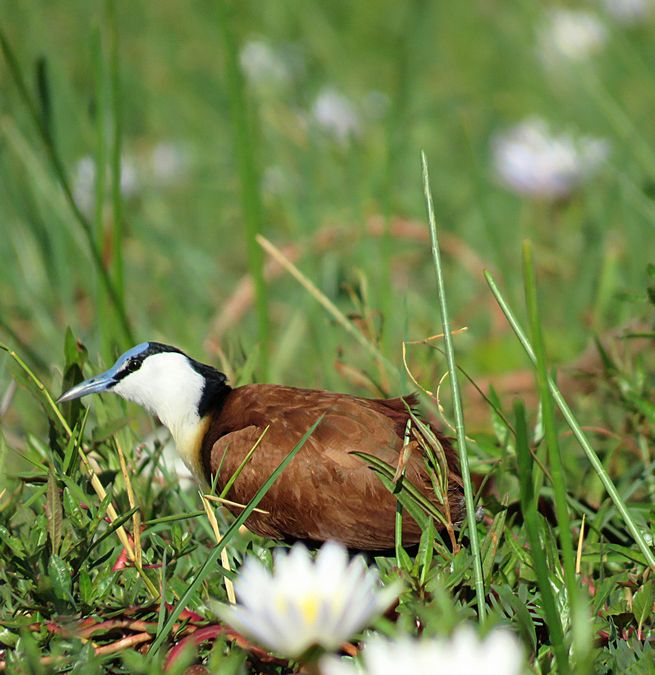
African Jacana - a rust-red bird with white face and
neck and a pale blue shield of skin on the forehead.

African Jacana walk on water. Extremely long toes
allow it to walk on floating vegetation and water lily
leaves. Feeds on aquatic insects.

Male lion eating an elephant. We found it by going to the
area where numerous vultures were perched in trees.
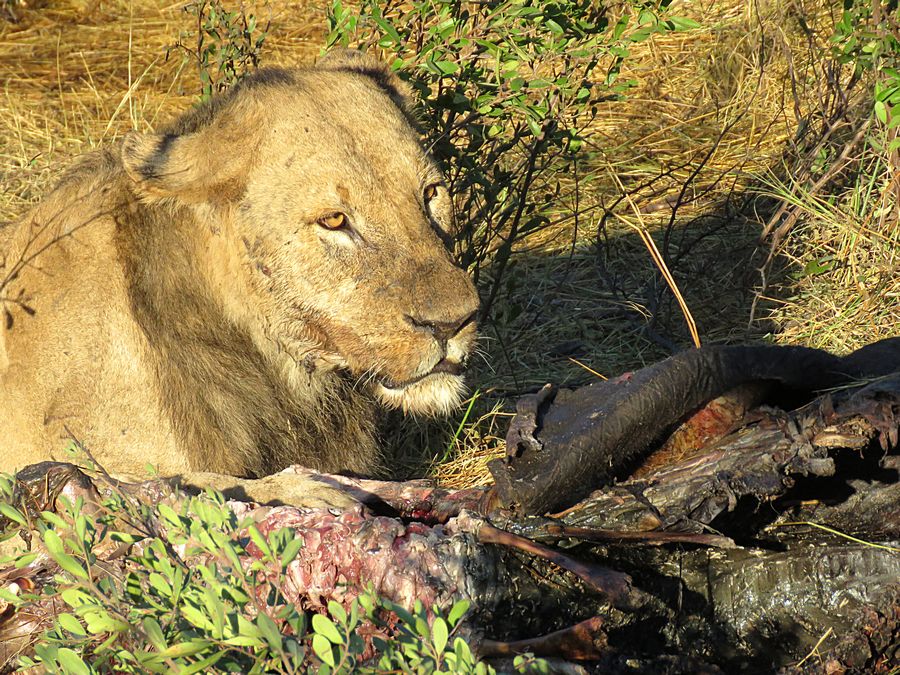
Lions prey on anything from young elephants to rodents.
They are partial to buffalo, zebra, and larger antelope.
They also pirate kills from other carnivores. They are
most active at night.

Had his fill for the moment. A German researcher working
on a project to help villagers coexist with lions (and not
poison them for killing their cattle) said this was a old lion,
more than 9 years old, based on the dark coloration of his teeth
(going towards orange at the base of the canines) and the
tips of canines that were worn down (not broken, but a smooth round
tip). Together with his overall physical appearance (the scraggy
mane, his lips starting to hand, etc., points to a very old male.

White-backed vultures waiting their turn at the carcass.
The white back of adults is visible only in flight.

Marabou Stork - in same tree as the white-backed
vultures.

Marabou stork spreading its wings.

Burchell's Zebras, including young one, grazing.
They live in family units of several mares and their
offspring and a single male. Graze on tall or short
grass.

Young zebra holding up back hind leg while eating.
Each individual zebra has a unique coat pattern.

A male Greater Kudu. A large antelope that prefers
dry woodland. Males have magnificent spiral horns
that attain full length after 3 years.

Tsessebe - a large antelope with a sloping back. Coat
is reddish brown with a darker head. Both sexes have
short, ringed horns.

Tsessebe are said to be the fastest of all antelope.

Red Lechwe - chestnut coated antelope that is often
around edges of marshes and is quick to enter water.
Deeply splayed hooves allow movement in mud.

A female red lechwe. The males have horns.
Link to Page Two - Okavango Delta
Pat's Home Page